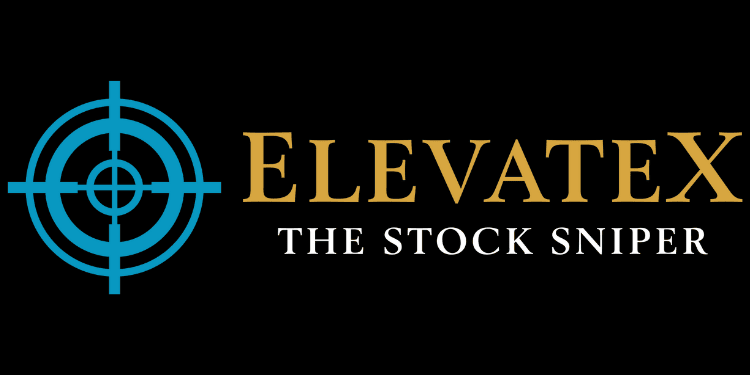- Live Life Grow Wealth
- Posts
- 🏦 Series 6 Recap: Advanced Topics (For Curious Learners)
🏦 Series 6 Recap: Advanced Topics (For Curious Learners)

Today’s Headline
🏦 Series 6 Summary: Advanced Topics (For Curious Learners)
If you’ve been following along with this 7-day series, I hope your perspective on investing has expanded beyond the basics. Over the past week, we’ve taken a deep dive into more advanced topics — the kind that make you not just an investor, but a thinking investor.
Each day was designed to stretch your understanding and help you connect the dots between how the financial world truly works and how you can make smarter decisions with your money. So, before we move on to the next series, let’s take a moment to recap everything we’ve learned this week.
Want to stay ahead of the next big money move?
Mindstream is a free newsletter that breaks down powerful insights from the worlds of AI, tech, productivity, and the future of money — the same forces reshaping our financial system faster than ever.
If you're investing without understanding the why behind global shifts, you're gambling.
This newsletter gives you the edge to stop reacting… and start predicting.
Choose the Right AI Tools
With thousands of AI tools available, how do you know which ones are worth your money? Subscribe to Mindstream and get our expert guide comparing 40+ popular AI tools. Discover which free options rival paid versions and when upgrading is essential. Stop overspending on tools you don't need and find the perfect AI stack for your workflow.
Day 1: What Is a REIT? Real Estate Investing Without Owning Property
We started the week with a fascinating topic — REITs, or Real Estate Investment Trusts. I explained how REITs let you invest in real estate without needing to buy a house, manage tenants, or deal with property taxes.
By owning shares in a REIT, you essentially become part-owner of a large property portfolio — like office buildings, malls, or even data centers. It’s like pooling your money with thousands of others to invest in real estate professionally managed by experts.
The main takeaway here was that REITs can provide steady income through dividends, since most of them pay out a large portion of their profits to investors. They’re great for people who want real estate exposure but don’t have the capital or time to buy property directly.
I also discussed how REITs can act as a diversification tool in your portfolio — balancing the volatility of stocks with the relative stability of property income.
Day 2: ETFs vs. Mutual Funds — What’s the Difference?
On Day 2, we compared ETFs (Exchange-Traded Funds) and Mutual Funds, two of the most popular investment vehicles. While both pool investors’ money to buy a mix of assets, their structures and accessibility differ.
I explained that ETFs trade on stock exchanges just like individual stocks, meaning you can buy or sell them anytime during the trading day. They’re known for being cost-efficient and transparent. Mutual funds, however, are typically bought at the end of the trading day and often come with higher fees due to active management.
The big lesson? ETFs are generally simpler and cheaper, while mutual funds can offer more professional management but at a cost.
For many investors, especially beginners, ETFs can be a fantastic way to start because they automatically give exposure to a diversified portfolio of assets. It’s like buying a basket of investments in a single click.
Day 3: Understanding Dollar-Cost Averaging
Day 3 was all about a timeless strategy — Dollar-Cost Averaging (DCA). I shared how this method helps remove emotions from investing.
The idea is simple: instead of trying to time the market, you invest a fixed amount at regular intervals — say every month — regardless of whether prices are high or low.
Over time, this approach averages out your cost per share and reduces the risk of buying everything at the wrong time. It also trains you to stay consistent and disciplined — two traits that separate good investors from impulsive ones.
I also emphasized that DCA is not about chasing quick gains but building wealth steadily and safely. It’s one of those “boring” strategies that quietly outperform most flashy ones over the long run.
Day 4: What Is Leverage (and Why It’s Risky)?
On Day 4, we dove into a more advanced but critical topic — leverage. I explained how leverage means using borrowed money to amplify your investment potential.
It sounds powerful — and it can be — but it’s also dangerous when misused.
Leverage can magnify profits if things go well, but it can also magnify losses if the market moves against you. That’s why I called it “a double-edged sword.”
I gave examples of how investors use margin accounts, loans, or derivatives to gain leverage — and why it’s only suitable for experienced investors who can manage the risk.
The big takeaway: Just because you can use leverage doesn’t mean you should. Sometimes, slow and steady growth beats risky shortcuts that could wipe you out.
Day 5: Options & Derivatives Explained Simply
Day 5 was about one of the most confusing parts of investing — options and derivatives. But I broke it down into simple terms.
A derivative is a financial instrument whose value “derives” from another asset, like a stock, index, or commodity. Options are a type of derivative that give you the right, but not the obligation, to buy or sell an asset at a set price in the future.
I used easy examples to explain the two main types:
Call Options – You profit if the price goes up.
Put Options – You profit if the price goes down.
While these tools can be used for hedging (protecting your portfolio) or speculation (betting on price movements), I reminded readers that derivatives require knowledge and caution. They can be useful, but they’re not beginner-friendly.
The key point: Don’t be lured by complexity. Master the basics first, then slowly learn advanced tools like options when you truly understand how they work.
Day 6: How Interest Rates Affect Stock Markets
On Day 6, we connected macroeconomics to investing — how interest rates affect the stock market.
When interest rates rise, borrowing becomes more expensive for companies and consumers. This can slow down economic growth, lower profits, and make stocks less attractive. On the flip side, when interest rates fall, businesses can borrow more cheaply, spend more, and expand — boosting stock prices.
I also explained how investors often shift their money between bonds and stocks depending on where interest rates are heading.
The key insight: Interest rates act like gravity for financial markets. When they rise, they pull stock prices down; when they fall, they allow them to float higher. Understanding this helps you make better timing and allocation decisions.
💡 Your Portfolio Isn’t the Only Thing That Needs Optimization
Smart investors don’t just grow their wealth — they also streamline their business operations for maximum efficiency and profit.
If you're an entrepreneur, run a startup, or manage a growing team, this free HR software matching tool can save you hours and thousands of dollars by helping you pick the right HR tech — just like a financial advisor would help you pick the best ETF.
Tailored HR Software Recommendations for Your Organization
Choosing HR software can be overwhelming—with over 1,000+ tools on the market, it’s easy to spend days and still feel unsure.
That’s why thousands of HR teams rely on SSR’s HR software advisors. Instead of spending hundreds of hours on research and demos, you’ll get free 1:1 help from an HR software expert who understands your requirements and provides 2–3 tailored recommendations based on your unique needs.
Whether you're looking for an HRIS, ATS, or Payroll solution, we help you cut through the noise and make confident decisions—fast.
Why HR teams trust SSR HR Advisors:
✅ 100% free for HR teams
✅ Get 2-3 Tailored solutions from 1,000+ options
✅ 1:1 expert guidance from HR advisors
✅ Trusted by 15,000+ companies
From MIT to the Indianapolis Colts, smart HR teams trust SSR to find the right software—without the stress.
Day 7: The Future of Investing — AI, Crypto, and Beyond
Finally, on Day 7, we looked ahead to the future of investing — the new frontiers shaping tomorrow’s markets.
We explored how AI is transforming investment decisions, from automated trading algorithms to robo-advisors that help individuals manage portfolios efficiently. I also touched on cryptocurrency — digital assets that are redefining how we think about money and value.
The exciting part is that technology continues to open new possibilities. But I reminded everyone that innovation always comes with uncertainty. The principles of risk management, diversification, and patience still apply — no matter how modern the investment vehicle looks.
The future belongs to investors who are open-minded, curious, and adaptable.
Final Takeaways
This entire series was about stretching your understanding. You’ve learned how to invest in property without buying it, how to pick between ETFs and mutual funds, how to automate your investments, the power and danger of leverage, what options and derivatives are, how interest rates move markets, and how the future of investing is evolving.
The world of investing is always changing — but knowledge is what gives you the edge. The more you learn, the more confident and independent you become.
So as we wrap up Series 6, remember this: Investing is not about chasing what’s hot — it’s about understanding what you own, why you own it, and how it fits your long-term goals.
Stay curious, stay disciplined, and keep learning — because the best investors never stop growing.
Call to Action:
If you found this series insightful, keep reading and stay subscribed. The next series will take everything you’ve learned and show you how to apply it in the real world — step by step. Let’s continue this journey together toward financial freedom and smart wealth building.
[Live Life Grow Wealth]
🎓 Free Masterclasses to Unlock Your Investment Potential
Take your money skills to the next level with expert-led workshops designed to help you grow smarter and faster.
Recommendations Section
“Peek into smart money moves — when big players act, you’re in the loop.”
|
Learn simple, proven ways to grow your money — straight from real investors who walk the talk.
|
“Hone your investing edge in just 5 minutes — smart, snappy insights to power your portfolio growth.”
|
“Stay ahead with one expert-picked stock monthly — clear, no jargon, built for growth.”
DISCLAIMER
I make no representations, warranties, or guarantees, whether expressed or implied, that the content provided is accurate, complete, or up-to-date. Past performance is not indicative nor a guarantee of future returns.
I am an individual content creator and not regulated or licensed by the Monetary Authority of Singapore (MAS) as I do not provide investment services.
All forms of investments carry risks, including the risk of losing your entire invested amount. Such activities may not be suitable for everyone. You are strongly encouraged to seek advice from a professional financial advisor if you have any doubts or concerns.








